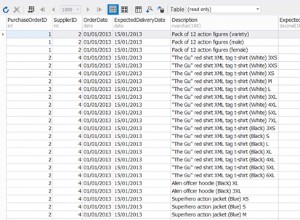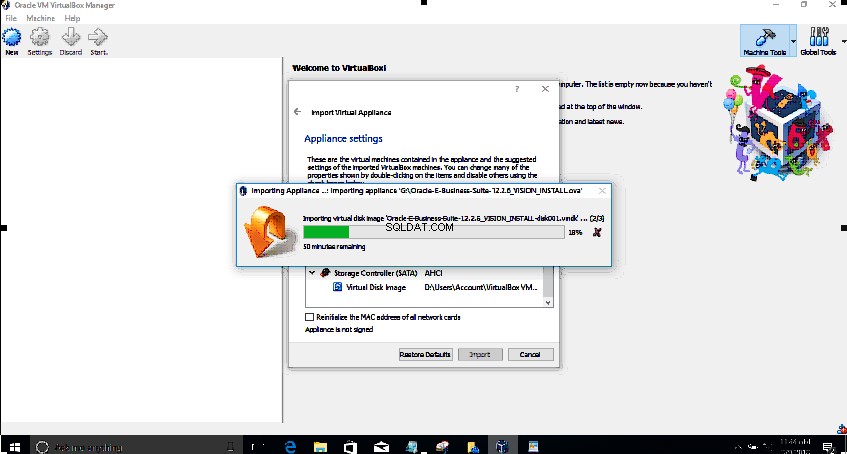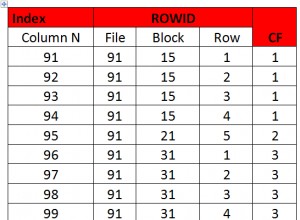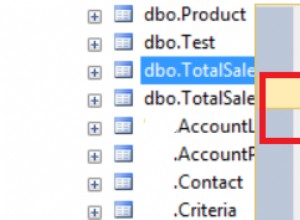Für eine Tabelle mydb.mytable Führen Sie dies aus für:
BYTE
SELECT (data_length+index_length) tablesize
FROM information_schema.tables
WHERE table_schema='mydb' and table_name='mytable';
KILOBYTE
SELECT (data_length+index_length)/power(1024,1) tablesize_kb
FROM information_schema.tables
WHERE table_schema='mydb' and table_name='mytable';
MEGABYTE
SELECT (data_length+index_length)/power(1024,2) tablesize_mb
FROM information_schema.tables
WHERE table_schema='mydb' and table_name='mytable';
GIGABYTE
SELECT (data_length+index_length)/power(1024,3) tablesize_gb
FROM information_schema.tables
WHERE table_schema='mydb' and table_name='mytable';
ALLGEMEIN
Hier ist eine generische Abfrage, bei der die maximale Einheitenanzeige TB (TeraBytes) ist
SELECT
CONCAT(FORMAT(DAT/POWER(1024,pw1),2),' ',SUBSTR(units,pw1*2+1,2)) DATSIZE,
CONCAT(FORMAT(NDX/POWER(1024,pw2),2),' ',SUBSTR(units,pw2*2+1,2)) NDXSIZE,
CONCAT(FORMAT(TBL/POWER(1024,pw3),2),' ',SUBSTR(units,pw3*2+1,2)) TBLSIZE
FROM
(
SELECT DAT,NDX,TBL,IF(px>4,4,px) pw1,IF(py>4,4,py) pw2,IF(pz>4,4,pz) pw3
FROM
(
SELECT data_length DAT,index_length NDX,data_length+index_length TBL,
FLOOR(LOG(IF(data_length=0,1,data_length))/LOG(1024)) px,
FLOOR(LOG(IF(index_length=0,1,index_length))/LOG(1024)) py,
FLOOR(LOG(IF(data_length+index_length=0,1,data_length+index_length))/LOG(1024)) pz
FROM information_schema.tables
WHERE table_schema='mydb'
AND table_name='mytable'
) AA
) A,(SELECT 'B KBMBGBTB' units) B;
Probieren Sie es aus !!!




